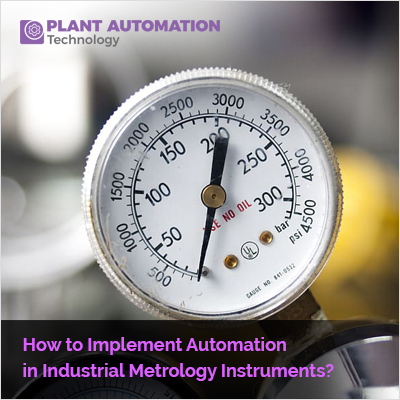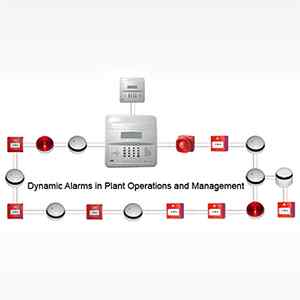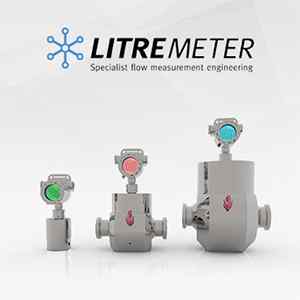How to Implement Automation in Industrial Metrology Instruments?

Implementing automation in industrial metrology instruments involves integrating technology and software to enhance measurement processes, increase efficiency, and reduce human intervention. Here are general steps and considerations for implementing automation in industrial metrology instruments:
Define Objectives:
The primary objectives of automating industrial metrology instruments include enhancing efficiency, accuracy, and overall productivity. Automation targets specific tasks such as data collection, measurement analysis, and quality control processes. By streamlining these functions through technology integration, companies aim to reduce human error, achieve consistent and reliable measurements, and ultimately improve the speed and effectiveness of their metrology operations.
Select Appropriate Metrology Instruments:
Selecting appropriate metrology instruments for automation is crucial. Opt for instruments that seamlessly integrate with automation by ensuring compatibility with necessary interfaces, connectivity options, and robust software support. This choice facilitates a smooth integration process and enhances the instrument's adaptability within an automated system.
Integration with Software:
Integrating metrology instruments with software is essential for effective automation. Implement software solutions that facilitate seamless communication between metrology instruments and other components of the automation system. This integration may require custom software development or the utilization of existing metrology software with built-in automation capabilities, ensuring a cohesive and efficient automated workflow.
| Also Read: Why Is Precision Important in Industrial Metrology Instruments? |
Sensor Integration:
For metrology instruments incorporating sensors such as optical sensors or laser scanners, precise integration with the automation system is essential. Ensure the proper calibration and synchronization of sensors to guarantee accurate and reliable measurements. This meticulous sensor integration contributes to the overall precision and effectiveness of the automated metrology process.
Robotics and Motion Control:
Integrate robotic systems or automated motion control devices to manage the movement of metrology instruments, especially in scenarios requiring instrument mobility across various measurement points or inspection of multiple parts. This integration enhances efficiency and accuracy in the automated metrology process.
| Also Read: Latest Advancements in Industrial Instrumentation for Automation |
Data Handling and Analysis:
Establish a system for real-time data acquisition, processing, and analysis in automated metrology. Integrate algorithms to interpret measurement data and make decisions based on predefined criteria or specifications. This ensures efficient and accurate handling of data, contributing to the overall effectiveness of the automated metrology process.
Communication Protocols: Establish communication protocols between metrology instruments and the automation system. Common protocols such as Ethernet, OPC (OLE for Process Control), and industry-standard communication protocols ensure seamless and reliable data exchange, facilitating efficient integration and coordination within the automated metrology system.
User Interface: Create a user-friendly interface for operators and engineers to monitor and control the automated metrology system. This interface should offer real-time feedback, visualization of measurement data, and configuration options, ensuring ease of use and efficient management of the automated system.
Quality Control and Validation: Establish strong quality control measures in the automated metrology system to guarantee accurate and reliable measurements. This involves routine calibration, validation procedures, and ongoing monitoring of system performance. These practices contribute to sustained precision and ensure compliance with quality standards.
Training and Documentation: Facilitate operator and maintenance staff proficiency by providing comprehensive training on operating and maintaining the automated metrology system. Develop detailed documentation to assist in troubleshooting, routine maintenance, and future upgrades, ensuring a well-informed and efficient workforce.
Safety Considerations: Prioritize safety in automated metrology, especially when utilizing robotic systems. Implement essential safety features like emergency stop buttons and adhere rigorously to industry safety standards. These measures are vital for ensuring a secure working environment and effectively mitigating potential risks associated with automation.
Testing and Optimization: Before full deployment, perform thorough testing and optimization of the automated metrology system. Identify and rectify any issues, and fine-tune the system for optimal performance. This guarantees a seamless and efficient operation in real-world applications.
Scalability and Flexibility: Design the automation system with scalability and flexibility in mind. Consider future upgrades, changes in measurement requirements, and the integration of additional instruments or sensors.
Regulatory Compliance: Ensure compliance with industry standards and regulations for the automated metrology system. This is critical, especially in industries with stringent quality control and certification requirements. Adhering to these standards ensures the system meets regulatory expectations and industry benchmarks.
Successfully implementing automation in industrial metrology instruments involves following these steps and considering these factors. This approach enhances efficiency, accuracy, and overall productivity in measurement processes.







